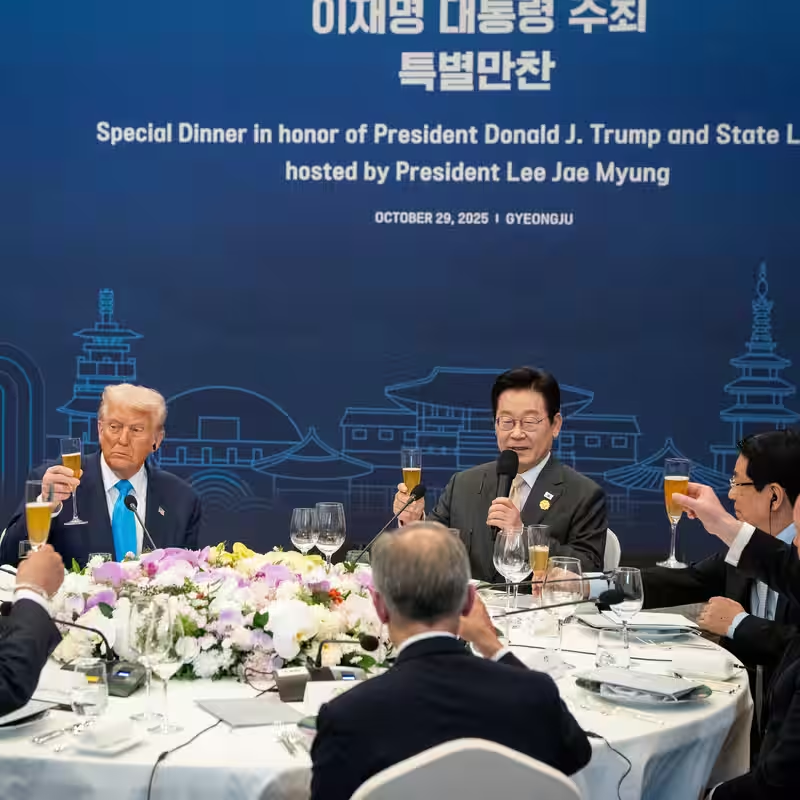When former President Donald J. Trump touched down in Asia for a high-stakes diplomatic tour spanning Japan, South Korea, and the Philippines, one thing was as certain as his handshakes: the menu would be tailored to his famously narrow palate. From well-done U.S. beef to Thousand Island dressing on everything, Trump’s culinary preferences became a quiet subplot in a trip loaded with geopolitical weight.
Trump’s Asia Food Tour: A Diplomatic Menu
The Trump Asia food tour wasn’t just about trade deals or military alliances—it was also a masterclass in gastronomic diplomacy. Host nations went to extraordinary lengths to accommodate the former president’s well-documented food quirks, blending American comfort with local flair in ways that revealed both respect and strategic calculation.
In Tokyo, chefs at the state dinner swapped delicate sashimi for thick-cut, USDA-certified ribeye—grilled well beyond medium, just as Trump prefers. In Seoul, kimchi was notably absent from the table, replaced by a custom burger topped with… you guessed it: Thousand Island dressing. And in Manila, even the traditional lechon was served alongside a side of ketchup-mayo mix to mimic Trump’s go-to condiment combo.
Why Food Matters in Diplomacy
While it may seem trivial, food is a powerful soft-power tool. For host countries, serving a guest’s favorite dish signals attentiveness and goodwill. But in Trump’s case, the accommodations also reflected a deeper reality: his administration had previously tied agricultural exports—especially American beef—to trade negotiations. Serving U.S. beef wasn’t just hospitality; it was policy on a plate.
- Japan: Imported U.S. beef for Trump’s steak, despite domestic premium wagyu availability.
- South Korea: Created a “Trump Burger” with American cheese and Thousand Island, served at a private luncheon.
- Philippines: Offered a fusion spread that included hot dogs, filet mignon, and iceberg lettuce salads—no greens with strong flavors allowed.
The Thousand Island Factor
Thousand Island dressing has long been Trump’s culinary signature—reportedly the only sauce he trusts. During his presidency, it appeared on everything from steaks to shrimp at Mar-a-Lago. On this tour, embassies reportedly shipped cases of the condiment ahead of his arrival, though local chefs were instructed to replicate it using regional ingredients when possible.
“It’s not just about taste,” said Dr. Lena Cho, a cultural diplomacy expert at Georgetown. “For Trump, familiar food equals control. In unfamiliar settings, his menu becomes a psychological anchor—and his hosts know that.”
Public Reaction and Local Backlash
Not everyone applauded the culinary concessions. In Seoul, food critics lamented the missed opportunity to showcase Korean cuisine. “We have 200 types of kimchi, and he gets a burger?” tweeted one prominent chef. In Manila, social media users joked about “diplomacy by dressing,” while others questioned the optics of serving imported beef in countries with robust local agriculture.
Behind the Scenes: The Logistics of a Presidential Palate
Planning Trump’s meals required weeks of coordination. Advance teams from the U.S. Secret Service and State Department worked with local chefs to ensure every dish met strict security and dietary protocols. No raw foods. No sauces made off-site. And absolutely no cilantro—another Trump no-go.
| Country | Trump-Approved Dish | Local Dish Replaced |
|---|---|---|
| Japan | Well-done U.S. ribeye | Wagyu beef sashimi |
| South Korea | “Trump Burger” w/ Thousand Island | Bibimbap |
| Philippines | Filet mignon + iceberg salad | Kare-kare (oxtail stew) |
A Symbol of a Larger Strategy
The Trump Asia food tour may seem like a quirky footnote, but it reflects a broader pattern: personal preference as foreign policy. Whether pushing for U.S. beef exports or rejecting “foreign” flavors, Trump’s table choices have long mirrored his “America First” worldview—even thousands of miles from home.
As one Filipino diplomat put it, only half-joking: “We served his steak the way he likes it—because the trade deal depends on it.”
Sources
The New York Times: U.S. Beef and Thousand Island Dressing: Trump’s Food Tour of Asia




